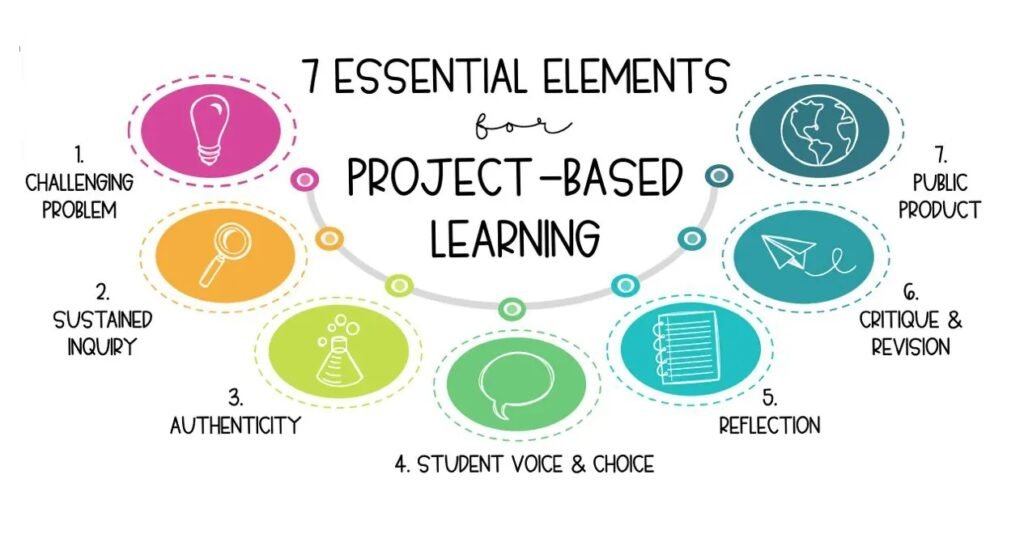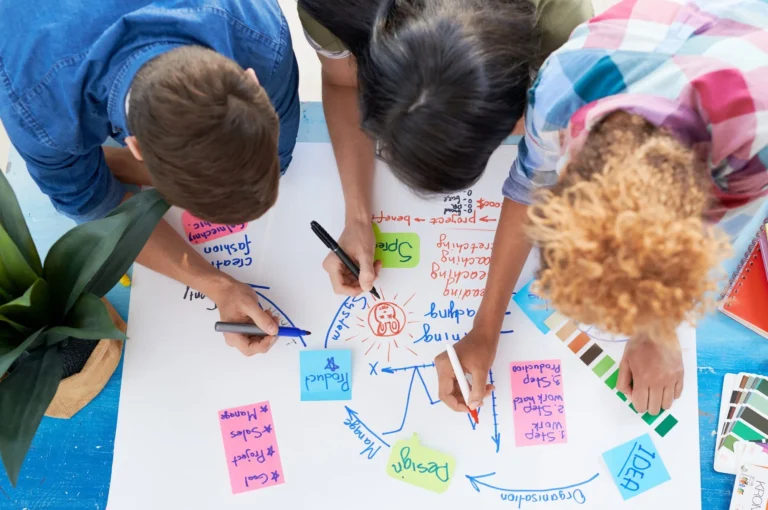Project-Based Learning (PBL) is an innovative educational approach that shifts the focus from traditional teaching methods to an experiential and student-centered framework. It emphasizes learning through engaging, hands-on projects that challenge students to explore, problem-solve, and apply knowledge in real-world contexts. By intertwining critical thinking, creativity, and collaboration, PBL prepares learners to thrive in a rapidly evolving world. This article delves into the core principles of (PBL), its benefits, implementation strategies, and why it’s gaining traction among educators and learners alike.
Understanding the Essence of Project-Based Learning
At its core, (PBL) is a teaching method that encourages students to investigate and respond to complex questions or problems over an extended period. Unlike traditional models that rely heavily on rote memorization, PBL requires students to apply what they’ve learned to create tangible outcomes. The approach integrates multiple disciplines, making learning more interconnected and meaningful. Through projects, learners are exposed to real-life challenges that foster curiosity, deepen knowledge, and develop essential skills.
In project-based learning, the focus is not merely on the end product but on the journey of exploration and learning. Students engage with open-ended questions that demand critical thinking and creativity, often leading them to unexpected yet valuable insights. This iterative process encourages learners to adapt, refine, and innovate, cultivating a mindset that embraces challenges as opportunities for growth.
The Core Principles Behind Project-Based Learning
Project-based learning revolves around several key principles that distinguish it from conventional education. First, it prioritizes authenticity by rooting projects in real-world problems, ensuring relevance to students’ lives. This connection to everyday experiences not only makes learning engaging but also highlights its practicality, reinforcing why certain concepts and skills matter.
Collaboration is another cornerstone of (PBL). Students often work in teams to brainstorm ideas, delegate responsibilities, and collectively solve challenges. These group interactions teach learners how to communicate effectively, navigate differences, and leverage diverse perspectives. Such collaborative environments mirror real-world work settings, better preparing students for their future careers.

Reflection is also integral to PBL. By regularly analyzing their progress, evaluating successes and setbacks, and considering areas for improvement, students become more self-aware and better equipped to manage future projects. Public presentation or showcasing of the completed work is a typical conclusion of PBL, instilling a sense of accomplishment and accountability while boosting confidence in sharing ideas with a broader audience.
Benefits of Project-Based Learning for Students
(PBL) offers numerous advantages, transforming the educational experience for students. It enhances engagement by connecting academic content to practical applications, making learning more enjoyable and memorable. The hands-on nature of PBL fosters critical thinking and problem-solving abilities, as students navigate real-world scenarios.
Another benefit is the development of soft skills such as teamwork, communication, and adaptability. When students work on projects collaboratively, they learn to articulate their ideas, listen actively, and respect differing opinions. These interactions build interpersonal skills that are crucial in professional environments and everyday life.
Moreover, PBL nurtures self-management. By taking ownership of their projects, setting goals, and managing deadlines, students develop a sense of responsibility and independence. This prepares them for future academic and professional challenges where self-discipline and initiative are vital.
How Teachers Facilitate Project-Based Learning
In (PBL), teachers shift from being traditional lecturers to facilitators and mentors. Their primary task is to guide students through the learning process, providing resources, support, and constructive feedback.
Educators design projects that align with curriculum standards while ensuring they remain engaging and challenging. These projects are structured to encourage inquiry, prompting students to ask questions and explore various perspectives. Teachers foster an environment where curiosity thrives, encouraging students to take intellectual risks and view setbacks as learning opportunities.
By offering timely feedback, educators help students refine their work and build confidence. They also play a crucial role in mediating group dynamics, ensuring every student contributes and benefits from the collaborative process. This supportive guidance empowers learners to take ownership of their education and achieve meaningful outcomes.
Examples of Project-Based Learning in Action
(PBL) can be adapted across diverse educational settings and age groups, demonstrating its versatility. For instance, students studying environmental science might collaborate on designing a sustainable community garden. This project integrates principles of biology, chemistry, and civic responsibility, allowing students to see the interconnectedness of these disciplines.
Another example involves creating a multimedia campaign to raise awareness about a social issue. This type of project blends language arts, technology, and public speaking, helping students develop technical skills alongside their ability to advocate effectively.
Such projects not only enhance academic knowledge but also instill a sense of responsibility, empathy, and civic engagement. They encourage learners to think beyond the classroom, considering how their efforts can positively impact society.
The Role of Technology in Project-Based Learning
Technology has significantly amplified the impact of (PBL) by providing tools and resources that enhance creativity and collaboration. Digital platforms enable students to research, design, and present projects more effectively, breaking the traditional boundaries of classroom learning.
For example, video editing software allows students to create compelling presentations, while data visualization tools help them analyze and display information dynamically. Virtual collaboration platforms enable team members to work together seamlessly, even when physically apart.
Moreover, technology connects learners with global experts and communities, enriching their perspectives and expanding their horizons. This digital dimension of project-based learning fosters innovation and prepares students for technology-driven environments.
Challenges in Implementing Project-Based Learning
Despite its numerous benefits, implementing project-based learning comes with challenges. Designing meaningful and standards-aligned projects requires careful planning and creativity from educators. It demands a shift from traditional teaching methods, which can be daunting for those accustomed to lecture-based instruction.
Time constraints within standard school schedules can limit the depth of exploration for some projects. Additionally, ensuring that all students are equally engaged and contributing can be complex, particularly in diverse classrooms with varying skill levels and learning styles.
Addressing these challenges requires robust training for teachers, flexible curricula, and consistent support from school administrations. When these elements are in place, the transition to project-based learning becomes more seamless and effective.
The Future of Education with Project-Based Learning
As education evolves to meet the demands of a rapidly changing world, project-based learning is emerging as a powerful paradigm. It aligns seamlessly with the needs of modern learners, emphasizing skills such as adaptability, creativity, and collaboration.
Educational institutions are increasingly adopting PBL to equip students with the competencies required for success in both academic and professional spheres. By fostering a culture of inquiry and innovation, project-based learning prepares individuals to navigate the complexities of the 21st century.
Conclusion
Project-based learning represents a transformative shift in education, moving away from passive absorption of knowledge toward active engagement and practical application. By immersing students in meaningful projects, this approach cultivates critical thinking, collaboration, and problem-solving skills essential for lifelong success.
While challenges in implementation exist, the benefits of project-based learning far outweigh its obstacles. As more educators embrace this model, it promises to redefine how knowledge is acquired and applied, making education more impactful and relevant than ever before.
Much Read





